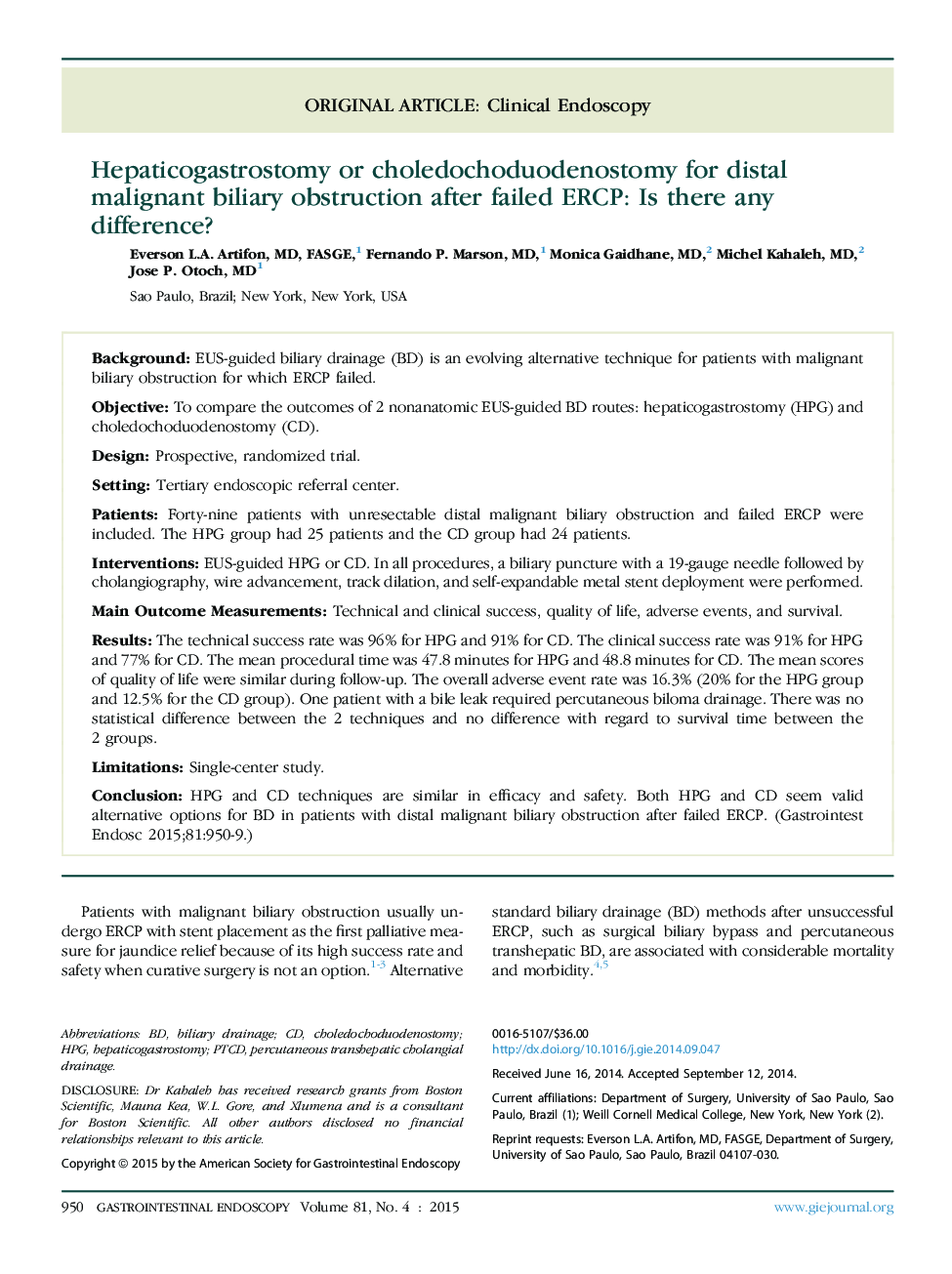| Article ID | Journal | Published Year | Pages | File Type |
|---|---|---|---|---|
| 6097854 | Gastrointestinal Endoscopy | 2015 | 10 Pages |
BackgroundEUS-guided biliary drainage (BD) is an evolving alternative technique for patients with malignant biliary obstruction for which ERCP failed.ObjectiveTo compare the outcomes of 2 nonanatomic EUS-guided BD routes: hepaticogastrostomy (HPG) and choledochoduodenostomy (CD).DesignProspective, randomized trial.SettingTertiary endoscopic referral center.PatientsForty-nine patients with unresectable distal malignant biliary obstruction and failed ERCP were included. The HPG group had 25 patients and the CD group had 24 patients.InterventionsEUS-guided HPG or CD. In all procedures, a biliary puncture with a 19-gauge needle followed by cholangiography, wire advancement, track dilation, and self-expandable metal stent deployment were performed.Main Outcome MeasurementsTechnical and clinical success, quality of life, adverse events, and survival.ResultsThe technical success rate was 96% for HPG and 91% for CD. The clinical success rate was 91% for HPG and 77% for CD. The mean procedural time was 47.8 minutes for HPG and 48.8 minutes for CD. The mean scores of quality of life were similar during follow-up. The overall adverse event rate was 16.3% (20% for the HPG group and 12.5% for the CD group). One patient with a bile leak required percutaneous biloma drainage. There was no statistical difference between the 2 techniques and no difference with regard to survival time between the 2 groups.LimitationsSingle-center study.ConclusionHPG and CD techniques are similar in efficacy and safety. Both HPG and CD seem valid alternative options for BD in patients with distal malignant biliary obstruction after failed ERCP.
